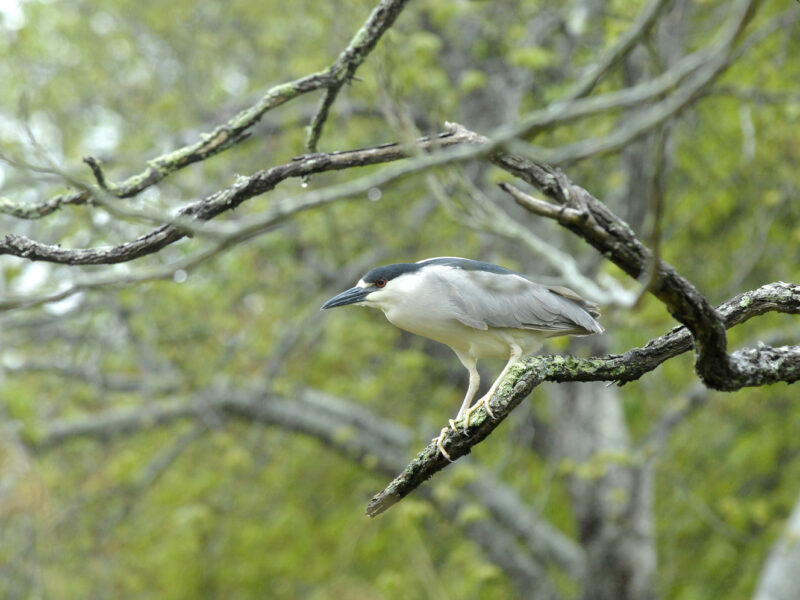
They’re back!
When I was a lad in the early 1940s, I remember seeing my first heron in a little creek behind our house on Westphalia Road in Mattituck on the North Fork. My grandfather, who owned the chicken farm next door, had a very big bird book and pretty much knew all the local birds.
“Quawk,” he said, pointing skyward.
It was my first unusual bird to learn, aside from the common robin and blackbirds that graced our yard each spring and summer. After learning the names of my first exotic bird at the tender age of 6, I started to take the birds more seriously.
I was already hooked on statistics, having followed my big brother Bobby’s love of the Brooklyn Dodgers, whose daily exploits were available in the Daily News since they won the pennant. I started to worship birds as much as I worshiped the Dodgers.
The black-crowned night heron, or quark, became my first marsh bird and the first one breeding locally. We had no egrets or other wading marsh birds at that time. They had yet to recover from the nasty pillaging suffered at the hands of hat-makers of the early years of the 20th century.
I remember finding my first nesting pair of ospreys in a tree on Mattituck Creek in Bower’s Woods. It was an exciting find and spurred me on to look for others. The same pair of ospreys were commonly known as fish hawks and nested in the same tree year after year from that year on.
By the 1950s, a few egrets, snowy and common, had come back by the 1960s, and they became regulars. You could see one or two feeding in every creek and salt pond.
The ospreys started nesting on the top of telephone poles along Route 25 in East Marion and Orient. By 1955, they were back full strength.
But in the 1960s, DDT derivatives began to be applied liberally in the same inshore waters that provided the fish food for the ospreys, and they began to be slowly poisoned to the point where they could no longer reproduce. The Long Island population rapidly went down to zero.
A group of birdwatchers began looking after the osprey. As the use of DDT in marshes and ponds became less common, they banded altogether, and the osprey began making a major comeback.
The Gardiners Island population was one of the first local ones to rebuild. The Migratory Treaty Act of 1918 started working again, and ospreys made a big comeback, followed by the egrets and other marsh and water birds.
Every few years, the Long Island population of heron sand marsh birds adds another species to their ranks. Don’t be surprised if in the next few years a local group of breeding birds are joined by a pelican or two.